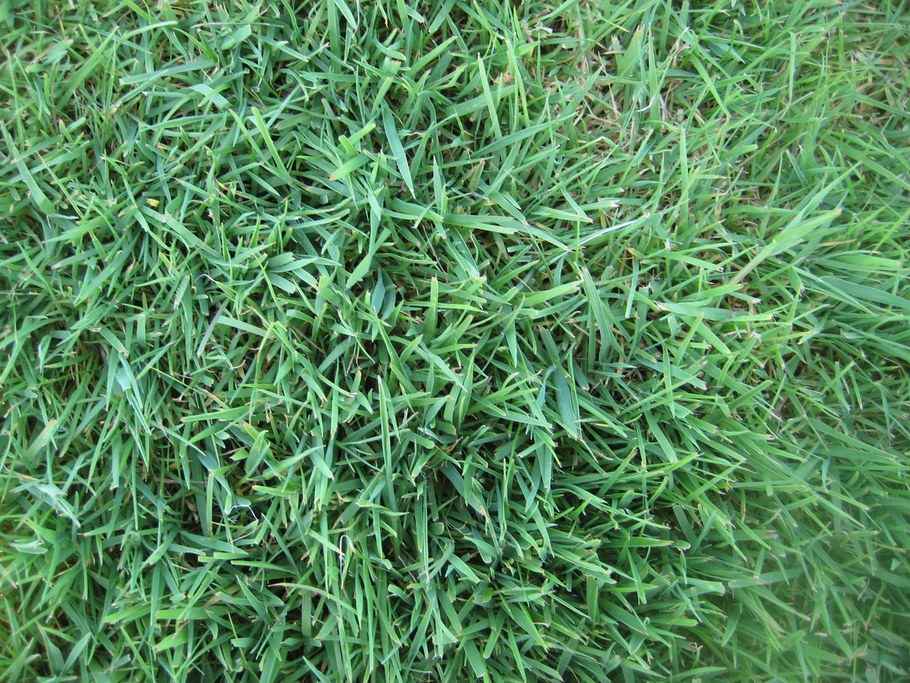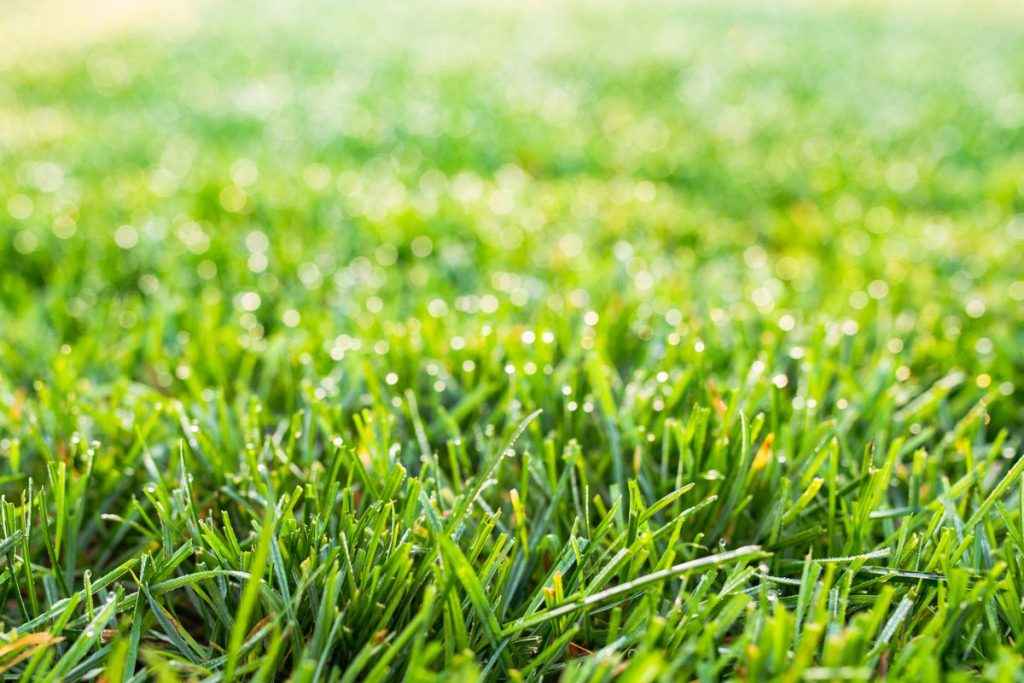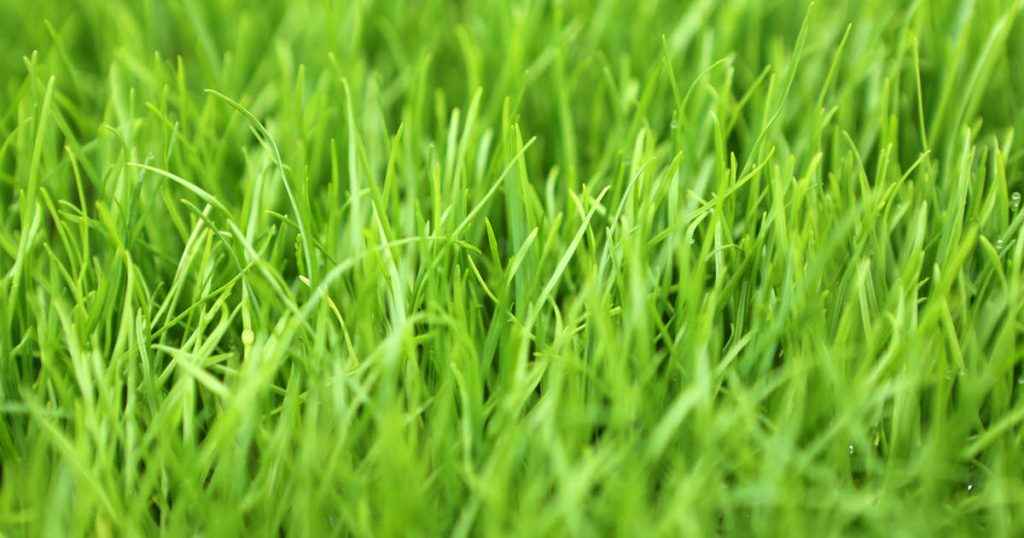People rarely know or care about the type of grass in their lawn.
But different types of lawn require different types of grass. This is important if you want your lawn to look good.
If you use your lawn for playing, your lawn needs to contain grass varieties that will withstand wear and tear.
An ornamental lawn on the other hand requires a different type of grass with different properties.
If you have a shaded lawn because of a large tree, you need a grass type that can cope with less sunlight.
Knowing which type of grass your lawn needs will make maintenance easier. It will also look healthier and much better.
If you’re sowing a new lawn, or overseeding your current one, you have a little freedom over which grass seed to choose for the job.
In this guide, I’ll tell you about each type of grass and in which situations it is best used.
The Different Types of Grass Commonly Found in UK Lawns
There are four common types of lawn grass:
- Bent Grasses
- Fescue Grasses
- Rye Grasses
- Meadow Grasses
There are also sub varieties of each which I’ll explain.
Bent Grasses
Bent grasses are usually found in flat ornamental or formal lawns. This is because their fine leaves are attractive and can tolerate being cut short.
There are three species of bent grass and each one has different characteristics.
Creeping Bent (Agrostis stolonifera)
Creeping Bent is a grass that spreads and grows quickly by creeping across the soil. Stolons are produced which aid this growth which chokes out weeds by creating dense foliage.
Creeping Bent can be cut as short as 3mm which is why it is perfect for a putting green or bowling green. Because it grows so quickly, it does require a lot of maintenance by regular mowing.
The excess stolons produced also generate a lot of thatch so regular scarifying and dethatching is also necessary.
Finally, this type of grass has a poor drought tolerance and its roots shallowly. Make sure you can water it enough in summer.
Common Bent (Agrostis Capillaries)
Common Bent is a durable grass that’s more “home lawn friendly.” It doesn’t have the issues with stolen production that Creeping Bent has, and it’s slow to establish but worth the wait for lush growth.
Common Bent produces thatch at faster rate than other types of grass so you’ll need to scarify lightly regularly.
If you own a cylinder lawn mowing and are trying to grow an ornamental lawn, Common Bent is a good choice. It is more tolerant to drought and wont choke out other species of grass.
Velvet Bent (Agrostis Canina)
Velvet Bent is a difficult grass to grow with some of the most elaborate grass leaves in existence. It needs fertile soil and cool, moist conditions before it can be grown successfully in your lawn.
Velvet Bent grows slowly but produces a lot of thatch. This means regular scarifying, even more frequently than Creeping Bent.
Velvet Bent isn’t ideal for home lawns so stay away from this variety unless you know what you’re doing.

Fescue Grasses
Some people call all the different species of grass “Fescues” but there are more than 450 varieties and only 4 types are grown for lawns.
Red Fescues, which tolerate drought and acidic soil well, make up the majority of our lawns because they can mix with other turfgrass to suit conditions where one variety might not survive alone.
Unfortunately, Red Fescues don’t produce a dense, thick turf by themselves so are best mixed with other types of grass seed.
This adaptable grass variety will allow other types of grass to grow in its place where it is beneficial to the lawn. It will then fill in any gaps to provide a good level of overall durability.
Creeping Red Fescue (Festuca rubra subsp. rubra)
Creeping Red Fescue produces rhizomes and is used to make grass turf.
There are many cultivars used for selective breeding with the best producing even growth and a rich green colour.
Slender Creeping Red Fescue (Festuca rubra subsp. litoralis)
Slender Creeping Red Fescue is used on golf courses across the world. It tolerates close mowing well and producing a very fine leaf.
Despite this, it isn’t as durable as Creeping Red Fescue. The unique advantage is its tolerance to salt, making it perfect for coastal locations.
Chewings Fescue (Festuca rubra subsp. commutata)
Chewings Fescue was discovered in the 19th Century and is named after the farmer who discovered it, George Chewings.
Chewings Fescue grows in patches and produces a dark green grass which performs well in shade.
Sheeps Fescue (Festuca Ovina)
Sheeps Fescue is used as a pasture grass and doesn’t have the fine appearance of Red Fescues.
It is very tolerant to shade though and grows beautifully in spotted sunlight.
Because of this, it is often included lawn seed blends for shade.

Ryegrass
Ryegrass is grown by many farmers to feed livestock so many gardeners consider it a weed.
As technology has advanced, Ryegrass has developed into an asset for people who want their lawns looking lush with minimal maintenance. It is included if many seed mixes and will work for family lawns and luxury lawns depending on ratio.
There are two main types of Rye Grass, each with its own set of cultivars. The best of these have affine appearance and make beautiful lawns.
The biggest advantage of Ryegrass is that it will grow in any soil type.
Dwarf Amenity Ryegrass
This is one of the most resilient and hardiest varieties of grass. It thrives in close mowing down to 12mm, tolerates frequent usage from a busy family and germinates much quicker than most others at 3 – 4 weeks after sowing.
It was specially bred to produce a dense grass sward and has a short growth habit.
Ryegrass lawns create beautifully vivid stripes thanks to their shiny green coloration. Great if you want to use the lawn striping function on your mower.
Tetraploid Amenity Ryegrass (Lolium Perenne)
Tetraploid technology is new and allows seeds to germinate quickly at low temperatures. It also grows 4 root systems instead of just the one.
This makes the species tolerant to wear as well as lawn disease.
Because of these qualities, it is now used in seed blends intended for professional playing fields (football and rugby) and golf courses.

Meadow Grasses
Meadow grasses are included in some seed mixtures because of their very high tolerance to drought and shade.
That said, only two species of Meadow Grass are commonly used in lawn seed.
Smooth Stalked Meadow Grass (Poa pratensis)
Kentucky Bluegrass or Smooth Stalked Meadow Grass grows well in wet conditions and spreads across soil well. This creates a good level of ground coverage.
It has a high tolerance to wear which makes it suitable for sports surfaces, ornamental lawns, and shaded areas.
Final Verdict
Creating and maintaining a beautiful lawn requires more than using any old lawn seed.
You need to choose the right types of lawn grass to create a lawn that allows you to use it as intended. Your seed also needs to work for the environment you live in, whether shade, lots of sunlight or little sunlight.
You now have the information you need to go out and create the lawn of your dreams.